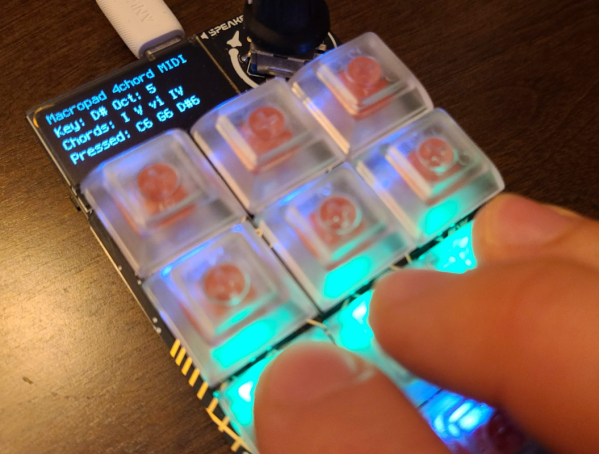From the 60s to perhaps the mid-00s, the path to musical stardom was essentially straight with very few forks. As a teenager you’d round up a drummer and a few guitar players and start jamming out of a garage, hoping to build to bigger and bigger venues. Few people made it for plenty of reasons, not least of which was because putting together a band like this is expensive. It wasn’t until capable electronic devices became mainstream and accepted in popular culture in the last decade or two that a few different paths for success finally opened up, and this groovebox shows just how much music can be created this way with a few straightforward electronic tools.
The groovebox is based on a Raspberry Pi Pico 2 and includes enough storage for 16 tracks with a sequencer for each track, along with a set of 16 scenes. Audio plays through PCM5102A DAC module, with a 160×128 TFT display and a touch-sensitive pad for user inputs. It’s not just a device for looping stored audio, though. There’s also a drum machine built in which can record and loop beats with varying sounds and pitches, as well as a sample slicer and a pattern generator and also as the ability to copy and paste clips.
There are a few limitations to using a device this small though. Because of memory size it outputs a 22 kHz mono signal, and its on-board storage is not particularly large either, but it does have an SD card slot for expansion. But it’s hard to beat the bang-for-the-buck qualities of a device like this, regardless, not to mention the portability. Especially when compared with the cost of multiple guitars, a drum set and a bunch of other analog equipment, it’s easy to see how musicians wielding these instruments have risen in popularity recently. This 12-button MIDI instrument could expand one’s digital musical capabilities even further.







 To be honest, pretty much any chunk of wire will do as an antenna for most shortwave receivers. But not everyone lives somewhere where it’s possible to string up a hundred meters of wire and get a good ground connection, which could make a passive loop antenna like this a good choice. Plus, loops tend to cancel the electrical noise that’s so part of life today, which can make it easier to pull in weak, distant stations.
To be honest, pretty much any chunk of wire will do as an antenna for most shortwave receivers. But not everyone lives somewhere where it’s possible to string up a hundred meters of wire and get a good ground connection, which could make a passive loop antenna like this a good choice. Plus, loops tend to cancel the electrical noise that’s so part of life today, which can make it easier to pull in weak, distant stations.










